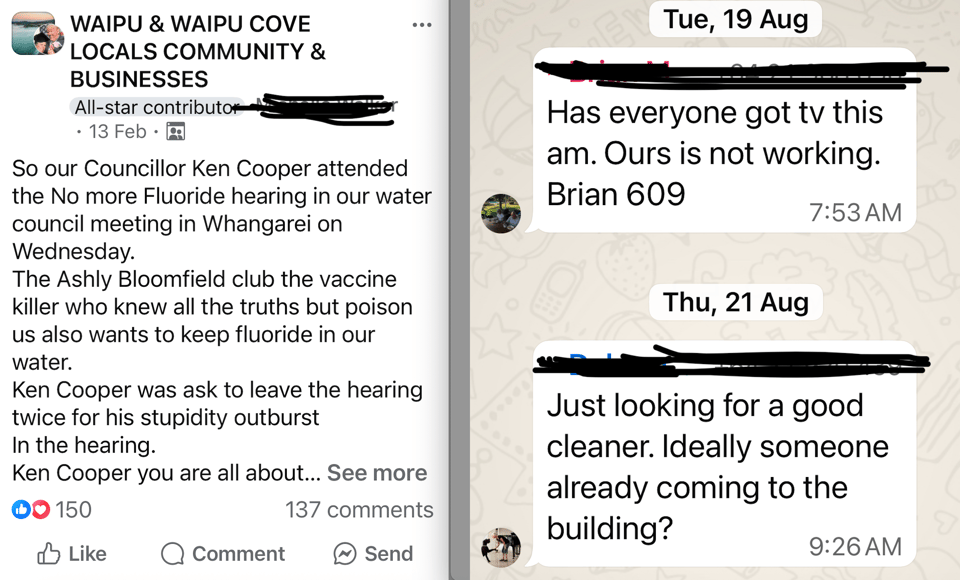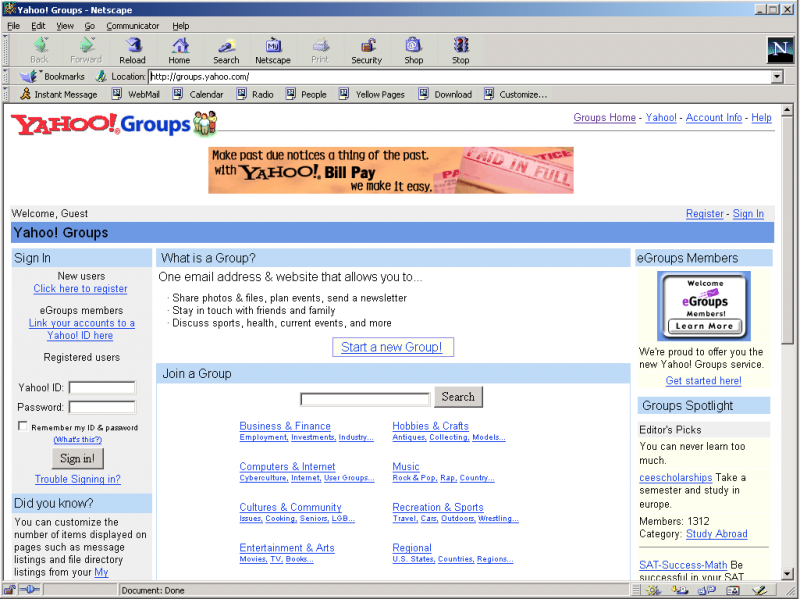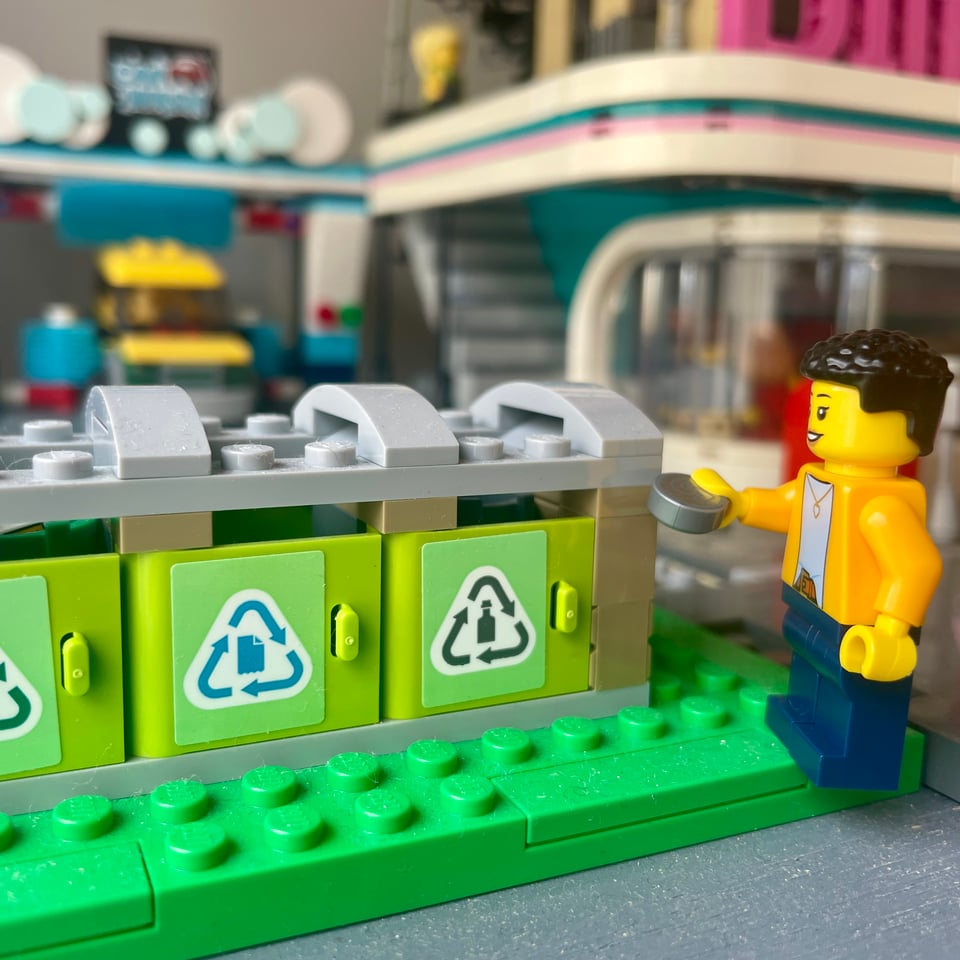We talk a lot about how broken the internet is for all of us as individuals. Doomscrolling, algorithmic feeds, overall exhaustion at The Horrors. But this week I’ve been thinking more about how it’s also really broken for groups.
Whenever I see small communities trying to form, whether it’s fan subcultures, neighbourhood initiatives, volunteer teams, parents wrangling kids’ sports, they hit the same wall: there’s no good online infrastructure for intentional groups. We make do with whatever’s available: WhatsApp chats, private Slacks, Discord servers, Facebook Groups, Substack comments. They all kind of work, but not for long. Because these are not tools for communities. They’re tools for communication, and that’s not the same thing.

Think about the last time you joined (or were forced to join) a new online group. It probably started with a burst of energy — intros, memes, emoji reactions. Then, within weeks, it had either gone completely silent, or become so noisy you muted it forever.
It wasn’t always like this. The early internet was messy and imperfect, but groups thrived. Think about Usenet. You could read posts in chronological or threaded order. The archives were public, searchable, and persistent. The conversations had continuity; newcomers could trace history going back years.
When Yahoo bought eGroups in 2000, it became the home of millions of neighbourhood associations, parenting circles, hobbyists and fans. Groups had shared files, polls, photos, and message archives. When Yahoo shut it down in 2020, over a million communities vanished.

LiveJournal took that infrastructure and added emotion. You could post longform thoughts, tag them, and decide exactly who could see each one — public, friends-locked, or custom “friend groups.” It was one of the more sophisticated systems for privacy and trust, and we haven’t had one like it since.
Then came social media platforms and the idea of a feed, which was just a constantly refreshing stream where the newest message pushes the old one out of sight. This shift killed something essential: the idea that communities could accumulate knowledge and contributions, instead of just rewarding reactions. We used to make FAQ posts to help newcomers feel welcome. We were optimising for belonging — and I think belonging requires continuity.
Look it’s not that the rickety old internet was perfect, far from it. As I work on my book I’ve been digging back through ugly old “flame wars” and bitchy locked-journal communities. But when I think about how to start a new community now, every tool seems worse than the last.
People want to be added to another slack like a hole in the head (that’s without even taking into account that as a workplace platform it sucks for community — you can’t block users, there are no moderation tools). Discord is a heavy lift unless you routinely yell “6-7” for no reason. Whatsapp has no threading, so you get a constant stream of nonsense. Facebook groups are sort of functional, actually, which is why neighbourhoods keep setting them up. But they’re on facebook, so… good luck with that. Substack comment threads aren’t community. Nextdoor just wants to arrest Black people.

And none of these groups are discoverable easily. Where do you go when you’ve just taken up embroidery and want to talk to people outside of crafters’ tiktok comments? How do you find fans who care as much about a new Netflix show as you do (watch Boots, I beg)? You now have the email addresses of all the people at the dogpark, but noone wants to copied on an email in the clear?
Worse, possibly, we’re all on the verge of message bankruptcy at all times. We don’t want more unread notifications, and we don’t want more places that we have to check in order to stay up to date.
I talk all the time about wanting us to build healthy, vibrant online neighbourhoods. “Bars” we want to hang out in (or farmers markets, or parks, or whatever your metaphor is). But to do this we’re going to need some new tools.

Here’s what I think a new neighbourhood tool would need, but you might disagree or have better ideas, so reply or comment below (for instance, new friend Adam this week suggested to me that actually vibrant groups need to always be new, and degrade over time, so we should always be refreshing them — I’m still noodling on that):
Persistent archives. Newcomers can learn history, you’re not always asking for the building’s security company’s details, or the recommendations for local hairdressers, or the hours of the school pool over the summer.
Transparent governance tools. Some shared decision-making, moderator accountability, no ability for the owner of the group to flounce dramatically and leave everyone stranded.
Layered privacy. Granular sharing options, so you can choose who sees what.
Federation & portability. No, not the neckbeard kind. But communities should be able to move or connect to one another.
Healthy digital spaces need the same foundations as physical ones (roads, rules, records, etc) so we can build the flourishing fun bits on top. If the web’s first generation gave us villages, and the second gave us gross, unliveable megacities, the next one should give us great neighbourhoods — small, knowable, human-scaled spaces where we can actually live together online.
The thing about neighbourhoods is that they don’t appear by accident. Someone has to plant the trees, pave the footpaths, decide where the park benches go. The same is true online. We need infrastructure that makes it easy for groups to stay — not just start. Right now, we’re trying to host potlucks in chat apps built for drive-through service. Let’s work out how to change that.
more good stuff
when we were talking about culture gaps, I mentioned the V&A’s Taylor Swift songbook trail bringing fans into the museum, so it was cool to see this latest iteration where Swifties are flocking to a German museum to see a painting that inspired the artwork for The Fate of Ophelia music video.

have loved seeing the media coverage around the Grand Sumo Tournament being held in London, and this is a great read about its international fans.

sightseeing rikishi when I lived in Singapore I remember sitting in Irish pub Molly Malone’s and thinking about how all international Irish pubs sort of look like they’ve come out of a crate, so I loved this long read about how that’s not exactly untrue.
finally, in my lego city

Forward this email to someone who overreacts in the chat.
You just read issue #43 of what you love matters. You can also browse the full archives of this newsletter.

Add a comment: